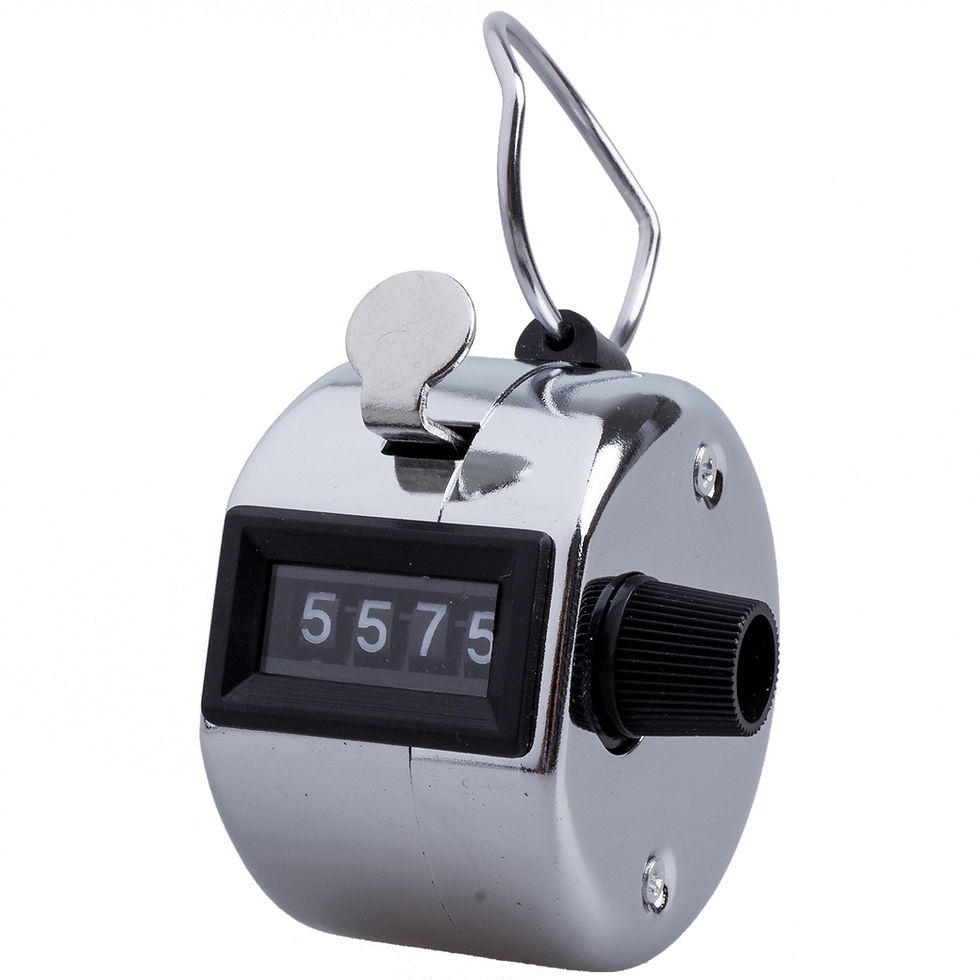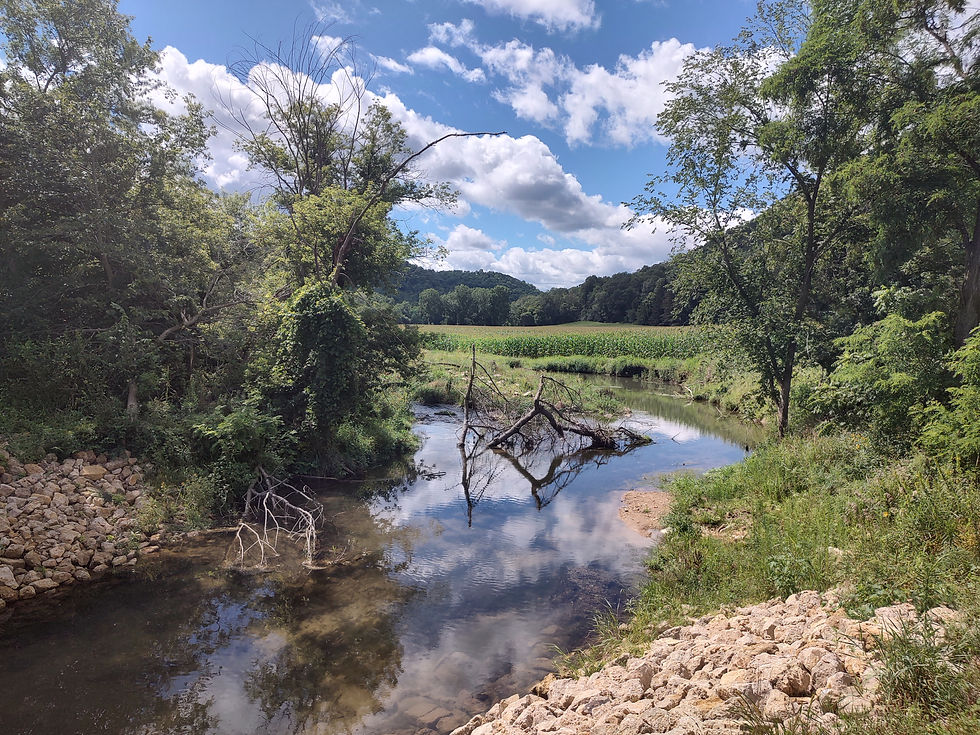One fish, two fish, red fish, blue fish. I totally get why Dr. Seuss quit counting after two fish. I would be lying if I said I do not begrudge you for counting. Ok, maybe stopping after two is a bit too much, but fish counting takes the fun out of fishing. And it makes it harder to lie about how many you caught. I just don't care to count and it is not why I am out there.
I will be 100% honest here, I have never much understood fish counting. Yeah, I have done it before as has everyone. Hell, I still do it but I tend to lose count after the first half dozen or less fish. I simply lose interest in the idea of counting and it is not why I am out there.
I remember my first fifty fish day, a day I had taken off from my work at the University of Wisconsin about twenty-five years ago. I lucked into a Grannom caddis (Brachycentrus) hatch and the fishing was crazy good. I fished a number of places on the Coon Creek system, caught my second ever "Tiger Trout" (Brook Trout x Brown Trout hybrid), I counted fish, and I quit on fish number fifty. It was nuts! It was certainly a day to remember. Even at that point in my fishing evolution, I was not a fish counter. Then again, it was not as if I was always catching a lot of fish to be counted. But I did this day and am fairly sure it is last time I counted fish, at least above double digits.

The idea for this post comes from reminiscing about a friend from Pennsylvania telling stories about one of his father's friends that would keep a journal and by the end of the year would have recorded the 3,657 trout that he caught for the year and would have calculated the number of fish per hour - to the hundredth place. In the early season, he would catch them on "salted minners" - Pennsyltucky talk for Emerald Shiners (Notropis atherinoides) preserved in salt. And when the hatches picked up, he would chase the hatches to chase that number. And then switch back to some other more effective method for the summer and fall. The success - or failure, I suppose - was based on the number of fish caught. His goal was that end of the year number. The story seemed so crazy to me - and I am not just talking about that 3,000-plus total fish number. I can not see myself judging the success of a day or a season based on how many fish I caught or having any idea what my fish per hour count was. I can not see myself being able to keep with it either.

If that is your interest and reason for fishing, so be it, I suppose. I do not get it. But if that is what floats your boat... I do not have to understand it or enjoy it, so long as you do.

I suppose we all go through some sort of fish counting phase. Early on, it was easy to keep count for most of us. I know it was for me. Avoiding a skunking - which took me quite a few outings - was my main goal for the first year or two. Hell, it still is over thirty years later. I do not much care how many fish I caught but that number better be greater than zero or it messes with my ego. Maybe you have progressed past the bruised ego phase; I have not and am not sure I ever will.

After the first fish, the pressure is off, my ego is satisfied, and I probably have a pretty good idea of about how many fish I have caught without being a "fish counter". From one through four or five, I probably know the number with precision. From six to ten, I've probably lost count but could guess it within a fish or two. After ten, I can guarantee that I have lost count and the further from ten, the less accurate my guesstimate probably is. I guess I just don't care at that point.
The Problem with Chasing a Number
It is not really my place to tell people how to enjoy fishing but hardcore fish counting is not without its issues. While it depends upon how you are fishing, catching and releasing trout is not without mortality. I often enjoy Kirk Deeter's articles and blog posts as they are often thought-provoking. This one from a while back - Is Catch-and-Release Angling All It's Cracked Up to Be? - got me thinking, which is what a good article or blog post should do. If you've read his stuff, you know he's had a lot to say about the effects of anglers on the resource and on other anglers. He's the guy that coined the term, "Rivergeddon".
The pressure anglers are putting on fish and rivers is having a major, detrimental effect on fish populations and the fishing experience, right now. And it’s getting worse.
Angling - yes, even catch and release angling - can have a detrimental affect on fish populations. To me, the heart of Kirk's C&R article is this quote;
If the benchmark for success is a 20-fish day, and every guide across America has their never-ever (and will never again) clients staring at strike indicators all day long, because that’s the only way they can get them to pull on 20 or more fish and thus be successful…we’re in trouble.
If fishing becomes just about a number, where's the joy in that? If the goal is twenty fish, is sixteen a disappointment? If so, I would love to have a number of disappointing days. What about a day of five or six trout, most of which are better than average? Does anyone want to call that day a failure? I have had days I would call successful because I caught a fish in a particularly difficult spot, I fished a new place that I enjoyed, I fished with a good friend or a new friend, encountered something I have never seen or experienced before, or any number of other things - other than fish count - that make a day successful and memorable. Isn't it really about chasing memories?
At what cost does chasing that number come at? Back to Mr. Salted Minner at the beginning of this essay - at what cost did 3,657 in a year come? Particularly when caught on the salted minnows, there is fairly significant mortality of those 3,657 trout which is pretty invisible to the angler. To satisfy an ego for another day or another year. Nah...

I am mostly fishing the Driftless Area, in many streams the bigger issue with trout populations is that there are too many of them. But that still does not excuse our unintended mortality. Many European countries, in particular, have a much different view of catch and release fishing than we do. I do not want to get into the ethical arguments but do not be surprised if, at some point in time, those ethical argument becomes more common in North America.
Keeping a Journal
I have mostly gotten away from keeping a journal but I do pick my journal up when I go somewhere new and try something different. Most of the time, I am fishing the Driftless Area and I am pretty confident I have it dialed in and I know what to expect - chalk it up to 30+ years of experience. Once in a while, my usual haunts throw something new at me. Often that is the time I go back and look at my old journals.

I really think a journal is a valuable asset, particularly for the angler that is trying to figure it out. I know I pretty religiously kept a journal in my first few years of fly fishing and used it to better understand hatches, how weather and stream temperature affect fishing, how fishing changed throughout the year, and to go back and look where I fished and who I fished with. I still go back and look at them on rare occasion when I get a little nostalgic.
Please give the Kirk Deeter article a read - I would love to hear your thoughts.

This is, with link some differences in execution, the same approach taken by other brands doing link industrial-level movement manufacturing, including Rolex, Omega, and Oris. You'll notice that machine-executed finishing is not a single style, by the way; every company puts its own stamp (to make a weak pun) link on their movements.
The picture you chose for "I am chasing beautiful places" definitely shows the contrast between the Mother Nature's stream and the quarry rock restoration streams of the Wisconsin DNR and the Coulee Region Trout Unlimited. Mother Nature's stream has backwater for frogs, toads and minnows to lay their eggs. Mother Nature's stream has dirt banks for the crayfish's burrow which the endangered Blanchard's Cricket Frog and endangered Massasauga Rattlesnake hibernate over Winter. The endangered female bumblebee also hibernates in the dirt bank over Winter. The dirt banks are also the nesting habitat for the bank swallow and kingfisher. The sandy, stream rock meadow is the nesting habitat for a killdeer. The timber in the stream is shelter and food for…